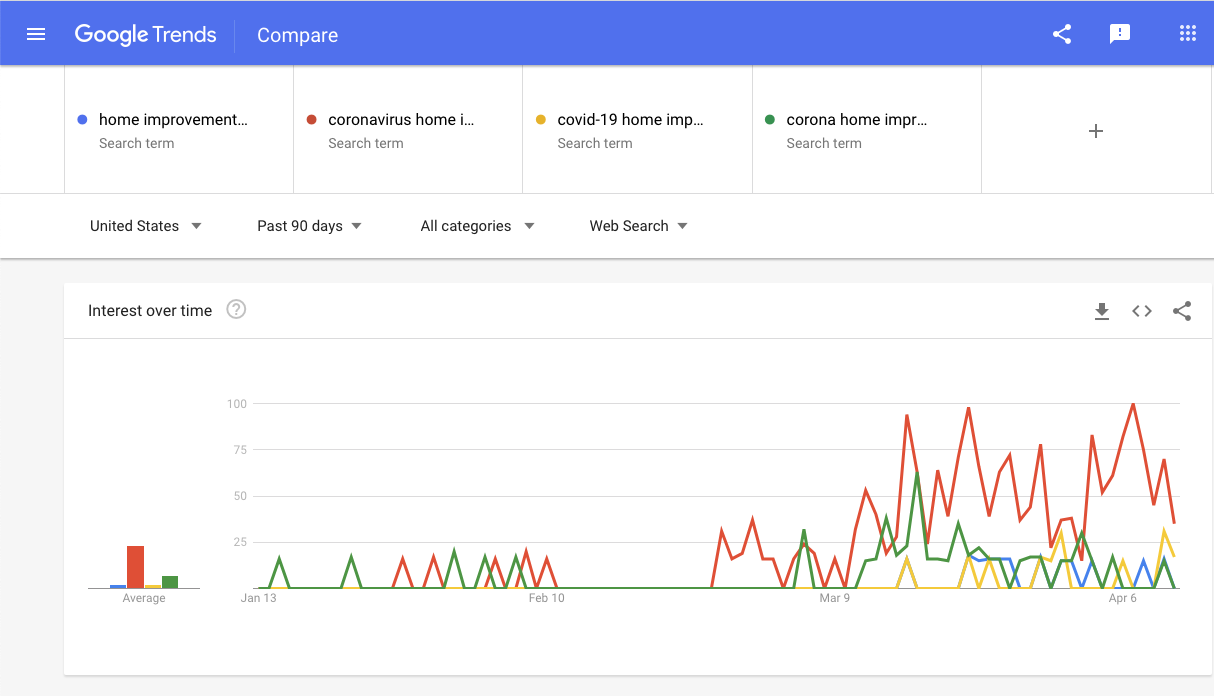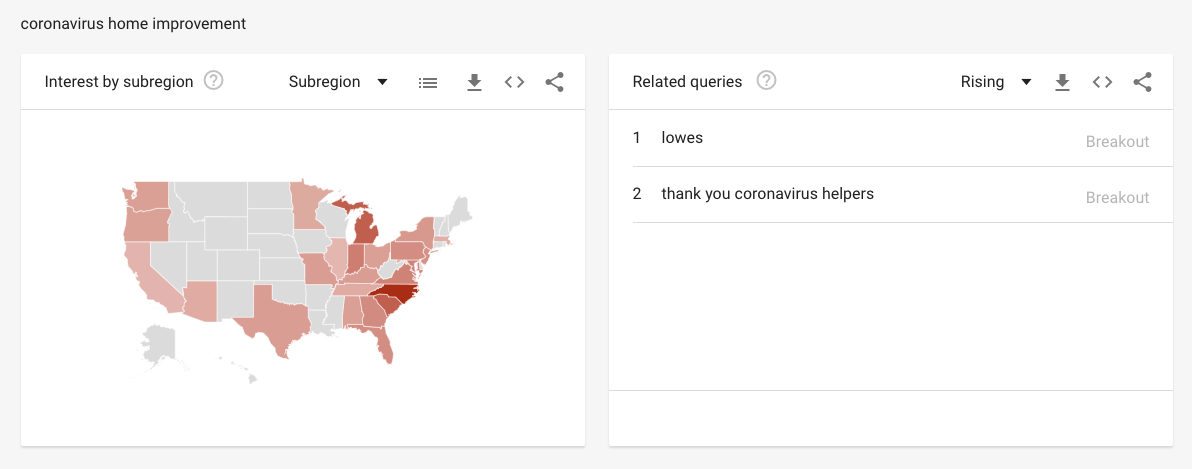Coronavirus is changing every aspect of our lives — even keyword research. There’s so much content being generated right now that you’ll be lost in the fog without the right tools. Here’s a quick guide on how to conduct keyword research during the COVID-19 pandemic.
Google Trends
Your typical keyword research tools could be failing you.
While tools like Moz, Ahrefs, and SEMrush are usually reliable, they have their downfalls for trending topics. Many keyword tools need time to collect data to provide insights, but with coronavirus-related searches skyrocketing in the span of just a few months, they don’t have historical data available. So, for the time-being, learning how to relate coronavirus to your industry could pose a problem.
Luckily, Google Trends is a resource that shows how often a search term has been entered in Google’s search engine during a specific period of time, and it provides data on search trends as recent as the last hour.
Why is this helpful?
With a topic as new and rapidly developing as coronavirus, Google Trends can give us a more realistic view of what people are currently searching. This way, we can stay ahead of the game without waiting for data to collect over time.
For example, one of our clients wanted to cover the topic of home improvement during coronavirus. This keyword does not show up with data in any of our usual keyword research tools. Instead, I went to Google Trends and typed in a variation of keywords on the topic.

As you can see, I learned that “coronavirus home improvement” has consistently trended upward and would be a great topic to cover. It’s important to remember to test different variations of how your searchers may refer to coronavirus. For example, they may use corona, coronavirus, COVID-19, or COVID — so try each variation in your research.

Google Trends can also see which states are searching for this topic the most and other related queries that may spark new ideas for content.
Where do I begin?
Start by taking some of your current keywords that drive traffic in your industry and combine them with a variation of the word, “coronavirus.” Be aware, unlike most keyword research tools that give you a list of related keywords, this will mostly be a “plug and chug” game where you will be trying new searches until you find what’s trending.
If you’re not having any luck …
Maybe your audience isn’t using the name of the virus in their searches. Perhaps there is a topic within your industry that is growing in searches now that everyone is stuck at home and changing their daily routines. Try searching that topic with a timeframe over the last six months to see if they are trending upwards. Now might be a good time to write about that topic if you haven’t started already!
Buzzsumo
Another great tool to help in these trending situations is Buzzsumo. This tool enables you to research articles related to particular topics that are trending in social media shares. Buzzsumo offers a free seven-day trial, but our team uses one of the paid plans.
Why is this helpful?
Articles that have more shares on social media are gaining increased visibility from your audience. Additional traffic to a page likely indicates that it also ranks well on Google.
As opposed to Google Trends, Buzzsumo is more focused on content research than keyword – but you can still use it to guide your keyword research.
For example, one of our clients works in the healthcare industry and is producing resources for physicians and hospital administrators regarding how to deal with the coronavirus pandemic. I used Buzzsumo to search for content related to coronavirus physician resources. With some trial and error, I finally searched “patient care covid” and found several articles that would be helpful for the client to generate content ideas.

One of the challenges of this research was sorting through all of the content to find articles that provided actual information and insights for physicians. Many of the most shared articles were the least relevant for the client’s industry as they were just news articles targeted to the general public.

However, don’t get discouraged by the volume of news content and continue digging into the data. Some of the least shared articles are where I found the articles more relevant to the client’s industry.
Where do I begin?
Start with the trending topics you researched with Google Trends as a search in Buzzsumo. This proves the value of the keyword for your industry beyond its trending volume. You can determine the intent of the search by gaining more context with the articles using that keyword.
For example, although “coronavirus tips” shows volume in Google Trends, a search in Buzzsumo reveals articles that are geared more toward the general public rather than tips for physicians. Refining the search by adding “for physicians” yielded a much smaller list of articles, but they were more relevant for the client’s industry.
What’s next?
Dig deeper into the articles and really analyze if the content is meaningful and if it makes sense for your business. You can use this content to springboard your ideas and craft your own content that’s similar, yet maybe even better.
You can also analyze the headlines for keywords they might contain, and then use those ideas as a search in Google Trends.
Put your keyword research into action
Conduct this type of research weekly, or every other week, to stay up to date with the latest trends and articles. As we’ve all discovered, the state of this pandemic is changing every single day.
Ultimately, if you have a great idea for valuable content that you know would benefit your audience, do it yourself and be the trendsetter. If your audience likes it, you will see evidence as it gains traction in both social media and search engines alike.
Now that you’ve learned how to conduct keyword research during the coronavirus pandemic, make sure you’re up to speed on other SEO best practices.
This article was co-written by Ashlee Dixon and Shelby McGuigan.
